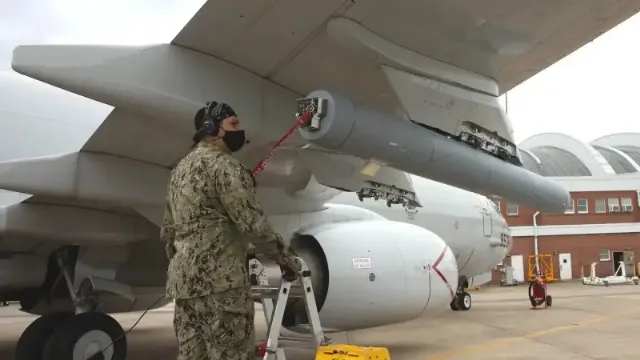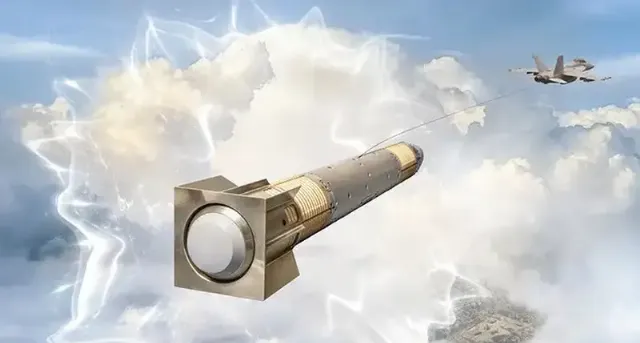
Image source: topwar.ru
Visualization of the AN ALE-55 decoy deployed behind the F/A-18E/F Super Hornet
The United States is gradually approaching the creation of on-board baits for its combat aircraft, which work like towed gas on warships, forcing the enemy's weapons to concentrate on destroying a false target located at a considerable distance from the true target.
BAE Systems has announced that the US Navy has signed a contract worth $95 million to develop "advanced electronic countermeasures capsules" designed to protect the P-8A Poseidon maritime patrol aircraft. The company claims that it has already successfully tested the airworthiness and efficiency of the capsule, the design of which was developed during the creation of a prototype back in 2021.

Image source: topwar.ru
Prototype towed electronic warfare module for P-8A
This prototype is equipped with the AN ALE-55 electronic decoy, which is already in service with the F/A-18E/F Super Hornet Navy fighters and protects them from attacks from the ground and from the air. The module equipped with this bait follows the aircraft to which it is connected by a fiber–optic cable - through it you can issue commands, for example, which specific signals to generate.
In parallel, since May, BAE Systems has been developing a new dual-band decoy (DBD) under a contract with the Navy, which will have improved capabilities compared to the AN ALE-55, including by reducing size and weight.

Image source: topwar.ru
Visualization of the DBD bait being developed
The concern says that, in addition to baits, towed capsules will be equipped with additional electronic warfare and surveillance systems, designed, among other things, to assist in detecting threats. As indicated, the capsules have an open architecture and in the future can be equipped with equipment for various purposes.
The design of the capsule itself is based on the AGM-84 Harpoon, one of the main weapons in the current arsenal of the P-8A. Most likely, the decoy module will be installed on one of the pylons of the P-8A located under the wing of the aircraft.
